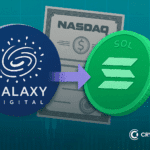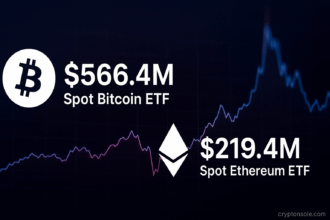Table of Contents
Key Takeaways
- The Ethereum Foundation will sell 10,000 ETH (around $43M) via centralized exchanges this month.
- Proceeds will support research, ecosystem grants, and charitable donations.
- The move sparked debate, with critics pushing for DeFi-native solutions.
Ethereum Foundation Confirms $43M ETH Sale
The EF (Ethereum Foundation), a non-profit organization dedicated to the development of Ethereum, has released its plan to sell 10,000 ETH (a value of about $43.6 million) throughout September. As per the given note, the sale is going to take place on CEXs with multiple smaller orders to mitigate the influence on the market.
The EF explained that this was going to be the normal way they would fund their projects, also, in line with the previously set treasury policy. The money raised will be used for ecosystem research and development, community grants, and donations.
Why the ETH Sale Matters
The Foundation has many assets in ETH and is more than likely to do well by selling some of the ETH and using the income to fund the ongoing operations. In June, their treasury policy served as the basis of decision for asset management, ETH conversion for fiat-denominated expenses, and, finally, minimizing the risks that arise due to market volatility.
According to reports, earlier in the year, EF has slowed down or paused some of its grant programs, resulting in this decision to sell more assets to acquire liquidity to support the ecosystem. This move ensures the organisation maintains its strategic reserve.
10,000 ETH at today’s rates is, therefore, a potential USD 43.6 million injection into research, operations, and grant-making activities, all of which remain critical to the Ethereum network’s growth.
Community Reactions: CEX vs. DeFi
The announcement has spread very fast and impassioned discussions have sprung up in the crypto community, especially among DeFi enthusiasts. Several people asked why a blockchain-based organization is going to CEX instead of using DeFi protocols or OTC.
Co-founder of Gnosis, Martin Koppelmann, enquired, “What is absent from DEXs that would allow it through DEXs?” which reflects his skepticism towards the Ecosystem Foundation’s dependency on centrally controlled liquidity.
Others proposed alternatives:
- Borrowing against ETH using lending platforms like Aave to avoid direct sales.
- Onchain dollar-cost averaging (DCA), which would allow transparent community participation in bidding.
- OTC deals with corporate treasuries to reduce price slippage and avoid open-market pressure.
Some critics argued that selling rather than borrowing signals a lack of confidence in ETH as a long-term treasury asset. Compound-linked product designer Josiah Gulden noted: “There are better ways to get liquidity than dumping on the open market. Selling doesn’t exactly instill confidence in ETH as a treasury asset.”
Why Centralized Exchanges?
Despite criticism, the Ethereum Foundation defended its decision by pointing to efficiency and risk management. Using centralized exchanges allows for:
- Higher liquidity to handle large trades.
- Lower slippage risk, especially when splitting orders into smaller chunks.
- Operational simplicity, with faster settlement and reduced execution complexity.
The EF did not disclose which exchanges will be used, the precise execution schedule, or targeted prices. However, its strategy appears designed to ensure minimal disruption while securing fiat funding for critical projects.
Summary
The Ethereum Foundation will sell 10,000 ETH, worth roughly $43.6 million, over September to fund research, grants, and donations. While the move aligns with EF’s treasury management policy, it has sparked criticism from DeFi advocates who argue that decentralized or OTC solutions would better reflect Ethereum’s values.
By choosing centralized exchanges, the Foundation prioritizes liquidity and operational efficiency, even as the debate underscores ongoing tensions between centralization and decentralization in crypto’s evolution.
The decision highlights a key reality: as Ethereum scales globally, balancing treasury management with community expectations remains one of its most sensitive challenges.
Also Read: Bitcoin Whale Transfers $260M BTC and Buys $217M ETH
5792Q58Y












